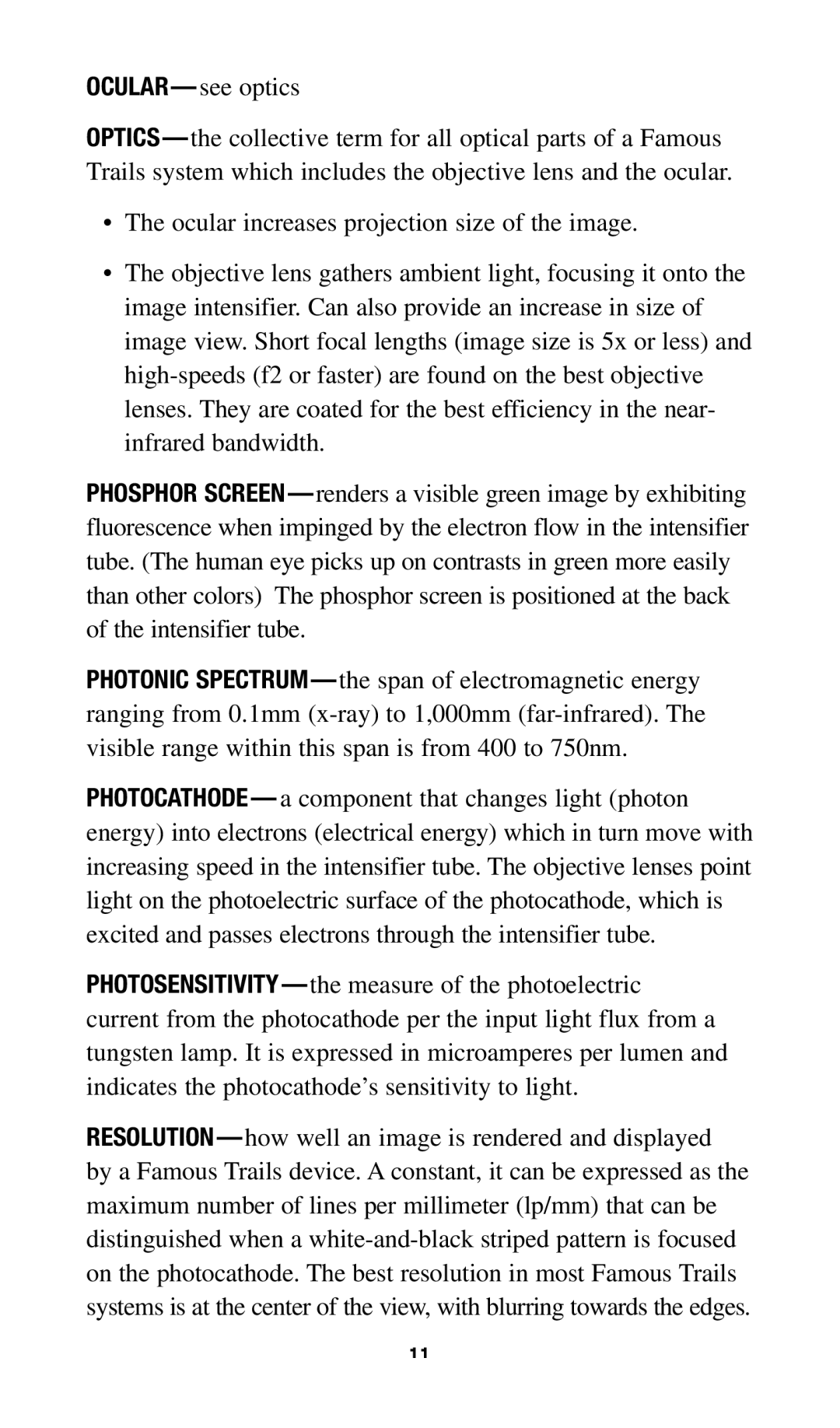OCULAR—see optics
OPTICS —the collective term for all optical parts of a Famous Trails system which includes the objective lens and the ocular.
•The ocular increases projection size of the image.
•The objective lens gathers ambient light, focusing it onto the image intensifier. Can also provide an increase in size of image view. Short focal lengths (image size is 5x or less) and high-speeds (f2 or faster) are found on the best objective lenses. They are coated for the best efficiency in the near- infrared bandwidth.
PHOSPHOR SCREEN —renders a visible green image by exhibiting fluorescence when impinged by the electron flow in the intensifier tube. (The human eye picks up on contrasts in green more easily than other colors) The phosphor screen is positioned at the back of the intensifier tube.
PHOTONIC SPECTRUM— the span of electromagnetic energy ranging from 0.1mm (x-ray) to 1,000mm (far-infrared). The visible range within this span is from 400 to 750nm.
PHOTOCATHODE — a component that changes light (photon energy) into electrons (electrical energy) which in turn move with increasing speed in the intensifier tube. The objective lenses point light on the photoelectric surface of the photocathode, which is excited and passes electrons through the intensifier tube.
PHOTOSENSITIVITY— the measure of the photoelectric current from the photocathode per the input light flux from a tungsten lamp. It is expressed in microamperes per lumen and indicates the photocathode’s sensitivity to light.
RESOLUTION —how well an image is rendered and displayed by a Famous Trails device. A constant, it can be expressed as the maximum number of lines per millimeter (lp/mm) that can be distinguished when a white-and-black striped pattern is focused on the photocathode. The best resolution in most Famous Trails systems is at the center of the view, with blurring towards the edges.
